RHHS History
Edit: 1/26/2016
Taken from Rock Hill Herald 9/10/2007 for "100 years of Rock Hill High School"
http://www.heraldonline.com/2007/09/10/116747/100-years-of-rock-hill-high-school.html
The history of Rock Hill High School
1888
- Rock Hill Graded School opens. The school, which is the first public, tax-supported school in Rock Hill, houses elementary and high school students.

1907
- The school board purchases the old Catawba Military Academy, now on the campus of Winthrop University, to relieve crowding at the graded school. The new high school is called Rock Hill High.
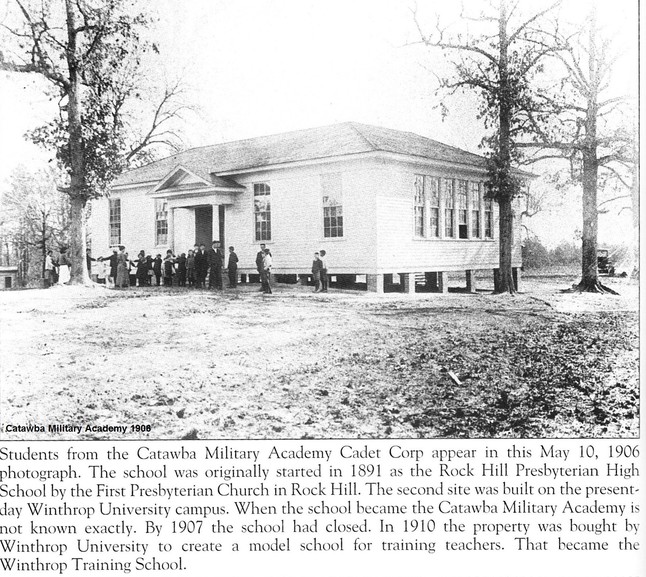
1908-1909:
- A dispute between the school system and Winthrop College, which wants the property for its training school, is sent to the courts. RHHS doesn't operate, and students go back to the graded school.
- Winthrop eventually wins the dispute and creates its training school.
- The school board charter is amended so trustees have to be popularly elected.
1913
- Rock Hill High School is built at North Spruce and East White streets.
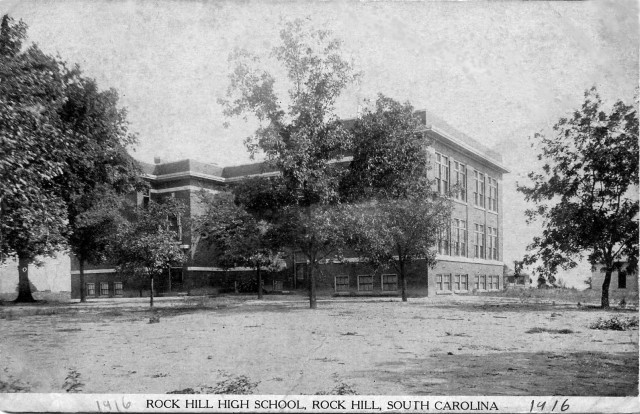
1923
- The football team starts calling themselves the Bearcats.
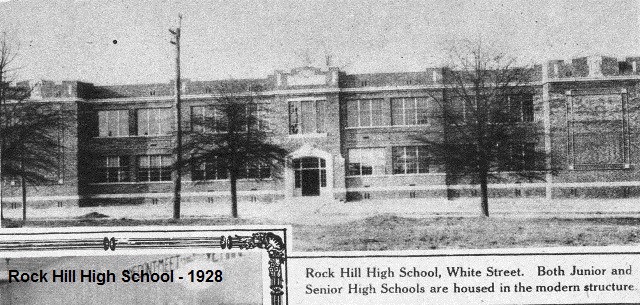
1935
- The first separate high school gymnasium is built, thanks to federal money.
1964
- Seven black students are the first to integrate at Rock Hill High from Emmett Scott High School.
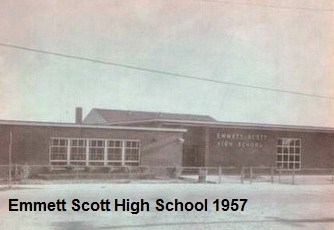
.jpg)
From AFRICAN AMERICAN REGISTRY (https://aaregistry.org)
On [4-24-1919] Rock Hill, South Carolina appropriated funding for Emmett Scott High School, the first South Carolina school for Blacks. This was a segregated education institution located in Rock Hill, SC.
Opening in 1920 it fostered quality education for Blacks until 1970. Prior to 1888, there was no public education in Rock Hill, SC. The first school district charter was issued in 1887, seventeen years after the city itself received a charter. Prior to that time education was carried on by more-or-less private schools supported by patrons and tuition of pupils. In 1888, the first public school in South Carolina opened. In 1898, John Coleman Cork became the third superintendent of the Rock Hill public schools; there was no graded school for Negro children. Their education was conducted by four parochial schools, which were: Friendship (Baptist) taught by Reverend M. P. Hall and Reverend M. A. Murray; Clinton institute (Methodist) taught by Reverend J.C. Crockett and Corps; Hermon Presbyterian taught by Reverend C. M. Young and his wife; and St. Paul's Episcopal taught by Professor Parker. These schools, with the exception of Clinton and Friendship, were conducted in the church buildings of their denominations.
They were under the general supervision of the Board of Trustees of the Rock Hill School District. During the years 1913 - 1914 sessions under the administration of Superintendent Gutner, a petition was presented to the school board by a group of Negro citizens composed of Z. V. Kennedy, Tim Broomfield, Coles Carter, Lee Cauthen and Tom Archie, asking for the establishment of a central graded school for Negro children. The petition stated that more Negro children would attend school if free tuition were available. The board considered the petition but took no action at that time. In August 1915 another group of Negro citizens asked the board to give them a free public school. Free tuition for Negro children through the fifth grade was approved in 1916 though no action was taken on a school.
In March 1919 an order was given by the board that arrangements be made to hold an election for the issuing of $75,000.00 worth of bonds for the purpose of paying indebtedness incurred in making additions to the buildings already in use. Also, these revenues would provide sites and buildings for another grammar school for white children in the western part of the city and a combined grammar and high school for Negro children in the southern part of the city. This election was held April 24, 1919 and was carried with 48 votes for and 3 against. The contract for the construction of what was to be Emmett Scott High School was awarded to a Mr. Padgett in 1920. Professor Frank Neal, a native of Rock Hill, was elected first principal. After the school was occupied, the question of name arose. It was common practice at the time for Negro schools, to raise money for supplies, teaching aids, etc.
The idea of a two-fold project to name the school while raising needed funds was used. Several groups of teachers and patrons chose the names of outstanding personalities of the day to sponsor in a contest for a name for the school. Among the names used were Booker T. Washington, George Washington Carver, Kelly Miller and Emmett J. Scott who had been secretary to Booker T. Washington at Tuskegee and was a high-ranking government worker in Washington, D.C. Obviously the Emmett Scott Group, led by one of the teachers, Miss Daisy Picketts, won out and the school was named in his honor.
Emmett Scott was accredited by the S.C. State Department and was allowed to grant state high school diplomas beginning with the class of 1934. There were 11 in the first class of 1923 and 195 in the class of 1966. There have been two superintendents at the Emmett Scott High School since 1920, R. C. Burts (1914 - 1938) and W. C. Sullivan (1934 - 1964). Six principals served Emmett Scott High School: Frank H. Neal (1920 - 1923), L. B.. Moore (1924 - 1938), Ralph W. McGuirt (1938 - 1959), W. H. Witherspoon (1959 - 1967), G. C. Land was principal (1967 - 1968) and Samuel Foster (1968 - 1970).
From THE GREEN BOOK OF SOUTH CAROLINA (https://greenbookofsc.com)
... Emmett Scott School included all 12 grades until 1956 and was a junior high and high school from 1956 until South Carolina schools were desegregated in 1970. The original two-story frame school was demolished in 1952. This property is owned by the City of Rock Hill and has been a neighborhood recreation center since the school closed in 1970.
March 1964
- Announcement to abolish Winthrop Training School, with completion by 1970, starting with grades 7 - 12. Many former WTS students would eventually go to Sullivan Junior High School and continue to Rock Hill High School.
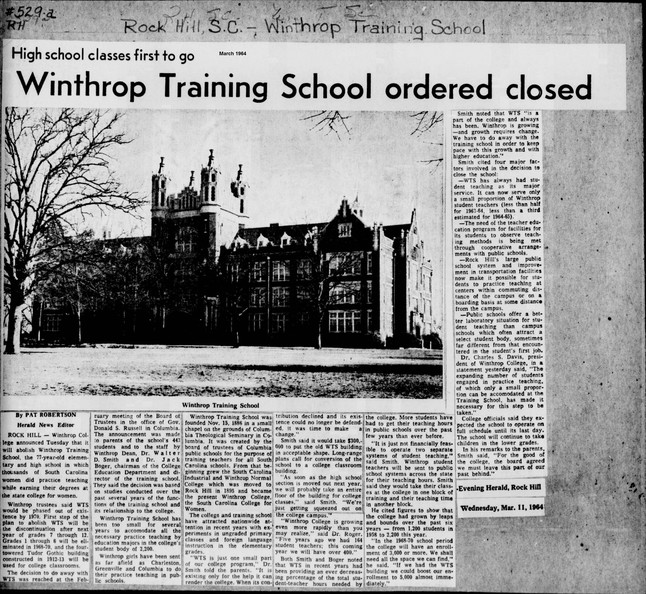
1965
- RHHS moves from White Street to the building originally built for Sullivan Junior High School. Sullivan students move to the old high school building.
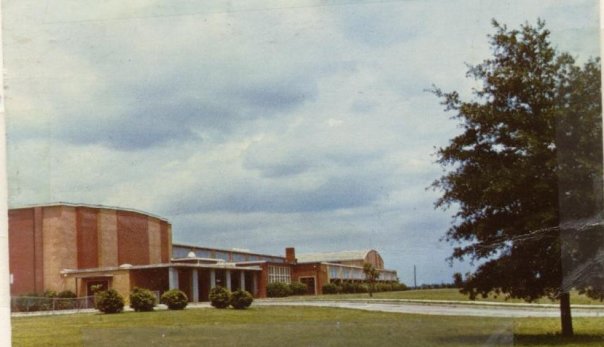
1970
- The first black student graduates from Rock Hill High.
1971
- Northwestern High School opens in Rock Hill. At least 1,500 students enroll at each high school.
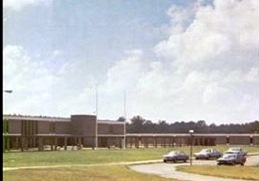
1972
- Gold is added to garnet and black as a school color. Gold represented Emmett Scott, the black high school that recently had closed.
1977
- Rock Hill High School opens at its current location on Springdale Road.
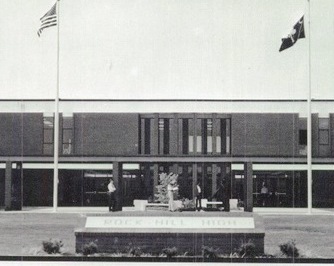
1978
- The original Rock Hill High on East White street is razed.
.jpg)
Source: The Herald
http://www.heraldonline.com/2007/09/10/116747/100-years-of-rock-hill-high-school.html
From THE GARNET AND BLACK - October 1970


